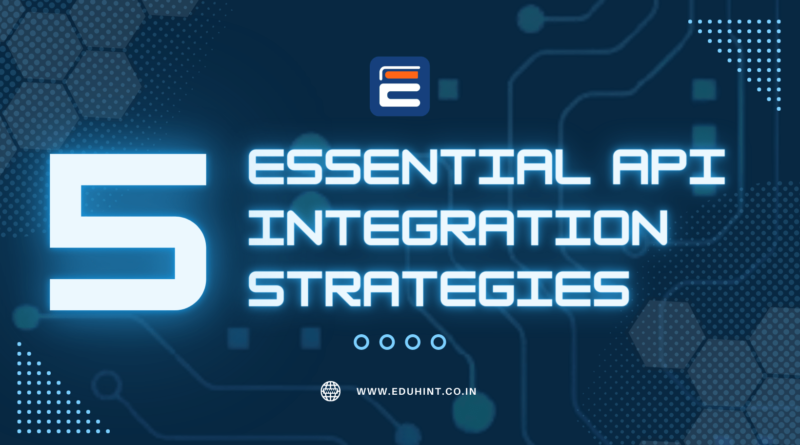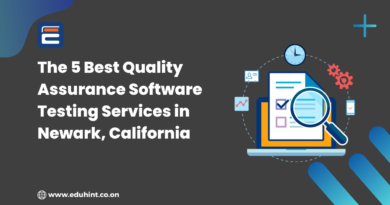5 min read5 Essential API Integration Strategies to Streamline Your Business Processes
In today’s digital age, businesses of all sizes and industries rely on various software applications to manage their day-to-day operations. From customer relationship management (CRM) software to project management tools, these applications play a critical role in helping businesses stay organized, efficient, and competitive. However, with so many different systems and tools in use, it can be challenging to keep everything connected and running smoothly. This is where application programming interfaces (APIs) come in.
APIs are sets of protocols, routines, and tools used for building software applications. They allow different applications to communicate with each other, share data, and work together seamlessly. By integrating APIs into their business processes, companies can streamline their operations, improve data accuracy, and reduce costs. In this article, we will explore five essential API integration strategies that can help businesses streamline their operations and stay competitive in today’s digital marketplace.
Automate Data Entry
One of the most significant benefits of APIs is their ability to automate data entry. Instead of manually entering data into different applications, APIs can be used to connect applications and transfer data automatically. For example, a business that uses a CRM system to manage customer information can use an API to automatically transfer new customer data from its website to the CRM system. This not only saves time but also reduces the risk of errors and improves data accuracy.
To automate data entry using APIs, businesses need to identify the data they want to transfer and the applications they want to connect. They also need to ensure that the applications have compatible APIs and that the data is formatted correctly. Once the API integration is set up, data will be transferred automatically, and businesses can focus on more critical tasks.
Sync Data Across Different Platforms
Another essential API integration strategy is syncing data across different platforms. Many businesses use multiple software applications to manage different aspects of their operations, such as accounting, inventory management, and customer support. However, without API integration, these applications may not communicate with each other, leading to data silos and inefficiencies.
By syncing data across different platforms using APIs, businesses can break down data silos and improve communication between different departments. For example, a business that uses a project management tool and an accounting software application can use APIs to sync project data with financial data. This can help businesses better understand their project costs and profitability, identify opportunities for cost savings, and make better-informed business decisions.
To sync data across different platforms using APIs, businesses need to identify the data they want to sync and the applications they want to connect. They also need to ensure that the applications have compatible APIs and that the data is formatted correctly. Once the API integration is set up, data will be synced automatically, and businesses can enjoy the benefits of better communication and improved data accuracy.
Improve Communication Between Systems
APIs can also be used to improve communication between different systems, such as between a website and a CRM system or between a mobile app and a backend database. By integrating APIs, businesses can ensure that different systems are communicating effectively and that data is being shared accurately and efficiently.
To improve communication between systems using APIs, businesses need to identify the systems they want to connect and the data they want to share. They also need to ensure that the systems have compatible APIs and that the data is formatted correctly. Once the API integration is set up, businesses can enjoy the benefits of improved communication, increased efficiency, and better data accuracy.
Use APIs for Notifications and Alerts
Another useful API integration strategy is using APIs for notifications and alerts. APIs can be used to send notifications and alerts to different applications or devices, such as smartphones, when certain events occur. For example, a business that uses a shipping management system can use an API to send notifications to customers when their orders are shipped or when there are delays in shipping. This can help businesses improve customer satisfaction and reduce the number of customer service inquiries.
To use APIs for notifications and alerts, businesses need to identify the events they want to trigger notifications, the applications or devices they want to send notifications to, and the format of the notifications. They also need to ensure that the applications or devices have compatible APIs and that the notifications are formatted correctly. Once the API integration is set up, businesses can enjoy the benefits of improved communication and increased customer satisfaction.
Integrate APIs for Payment Processing
Finally, businesses can integrate APIs for payment processing. APIs can be used to connect payment gateways, such as PayPal or Stripe, to eCommerce platforms or websites, allowing businesses to accept payments online. This can help businesses increase sales, improve customer satisfaction, and reduce the risk of payment errors.
To integrate APIs for payment processing, businesses need to identify the payment gateways they want to connect, the eCommerce platforms or websites they want to integrate, and the payment methods they want to accept. They also need to ensure that the payment gateways and eCommerce platforms or websites have compatible APIs and that the payment data is formatted correctly. Once the API integration is set up, businesses can enjoy the benefits of increased sales and improved customer satisfaction.
Conclusion
In conclusion, APIs can be a powerful tool for streamlining business processes, improving communication between different systems, and reducing costs. By automating data entry, syncing data across different platforms, improving communication between systems, using APIs for notifications and alerts, and integrating APIs for payment processing, businesses can stay competitive and efficient in today’s digital marketplace. However, businesses need to ensure that they choose compatible APIs, format data correctly, and test their API integrations thoroughly to ensure they work as intended. With the right API integration strategies in place, businesses can enjoy the benefits of increased efficiency, reduced costs, and improved data accuracy.





Pingback: Mastering Pipedrive API Integration: Unveiling Seamless Synergy - EduHint